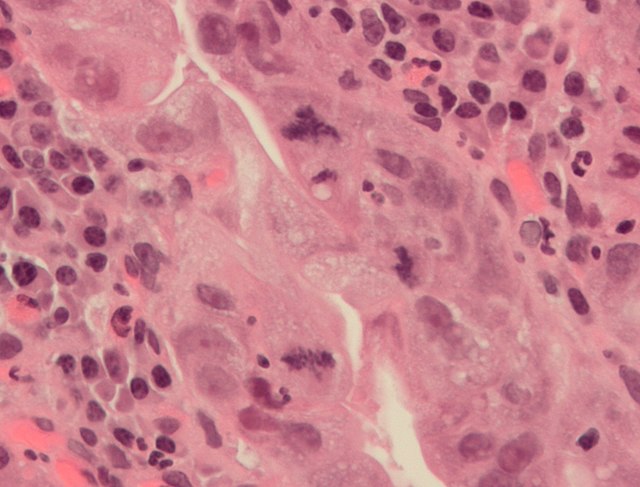Anaphase is the stage of mitosis after the process of metaphase, when replicated chromosomes are split and the newly-copied chromosomes are moved to opposite poles of the cell. Chromosomes also reach their overall maximum condensation in late anaphase, to help chromosome segregation and the re-formation of the nucleus.
A cell during anaphase. Microtubules are visible in green.
Mitosis is a part of the cell cycle in which replicated chromosomes are separated into two new nuclei. Cell division by mitosis is an equational division which gives rise to genetically identical cells in which the total number of chromosomes is maintained. Mitosis is preceded by the S phase of interphase and is followed by telophase and cytokinesis, which divide the cytoplasm, organelles, and cell membrane of one cell into two new cells containing roughly equal shares of these cellular components. The different stages of mitosis altogether define the mitotic phase of a cell cycle—the division of the mother cell into two daughter cells genetically identical to each other.
Onion cells in different phases of the cell cycle enlarged 800 diameters. a. non-dividing cells b. nuclei preparing for division (spireme-stage) c. dividing cells showing mitotic figures e. pair of daughter-cells shortly after division
A cell in late metaphase. All chromosomes (blue) but one have arrived at the metaphase plate.
Ciliate undergoing cytokinesis, with the cleavage furrow being clearly visible
An abnormal (tripolar) mitosis (12 o'clock position) in a precancerous lesion of the stomach (H&E stain)





